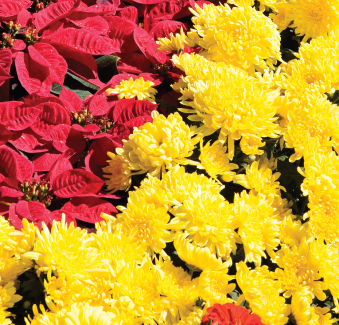This article appeared in the Winter 2007 issue of Texoma Living!.
Poinsettias are one of the longest-lasting blooming plants available to consumers. Here are the basic Do’s and Don’ts:
Do’s
DO place your plant in indirect sunlight for at least six hours per day. If direct sun can’t be avoided, diffuse the light with a shade or sheer curtain.
DO provide room temperatures between 68-70-degrees. Generally speaking, if you are comfortable, so is your poinsettia.
DO water your plant when the soil feels dry to the touch. Drain any excess water from the tray.
DO use a large, roomy shopping bag to protect your plant when transporting it.
Don’ts
DON’T fertilize your plant when it is in bloom.
DON’T place plants near cold drafts or excessive heat.
There is no reason to discard your Poinsettia after the holidays. To rebloom for the next season:
Continue to follow holiday upkeep tips throughout the winter.
March 17th (St. Patrick’s Day): When bracts (the colored portions of the plant, the actual fl owers are the yellow centers) fade, cut stems back to eight inches above soil line and continue to water regularly.
Lightly fertilize with a balanced all-purpose fertilizer every three to four weeks.
When temperatures are warm, place plant outdoors; first in indirect, then direct sunlight. Avoid temperatures below 50 degrees.
July 4 (Independence Day): Cut back new growth stems. Repot if needed.
Early September (Labor Day): Move plant inside. Provide six or more hours of direct light.
October 1 through mid-December: Confine plant to complete darkness for 14 hours, giving it 10 hours of natural light daily. This will set the buds and cause bracts to color.
Origin of the Poinsettia at Christmas
Bright, flaming red, star-shaped Poinsettias are known as ‘Flower of the Holy Night’ or ‘Flame Leaf’ in the United States. One of the most popular flowers in Central America, it was brought here by Dr. Joel Poinsett, the first US ambassador to Mexico, over a hundred years ago.

